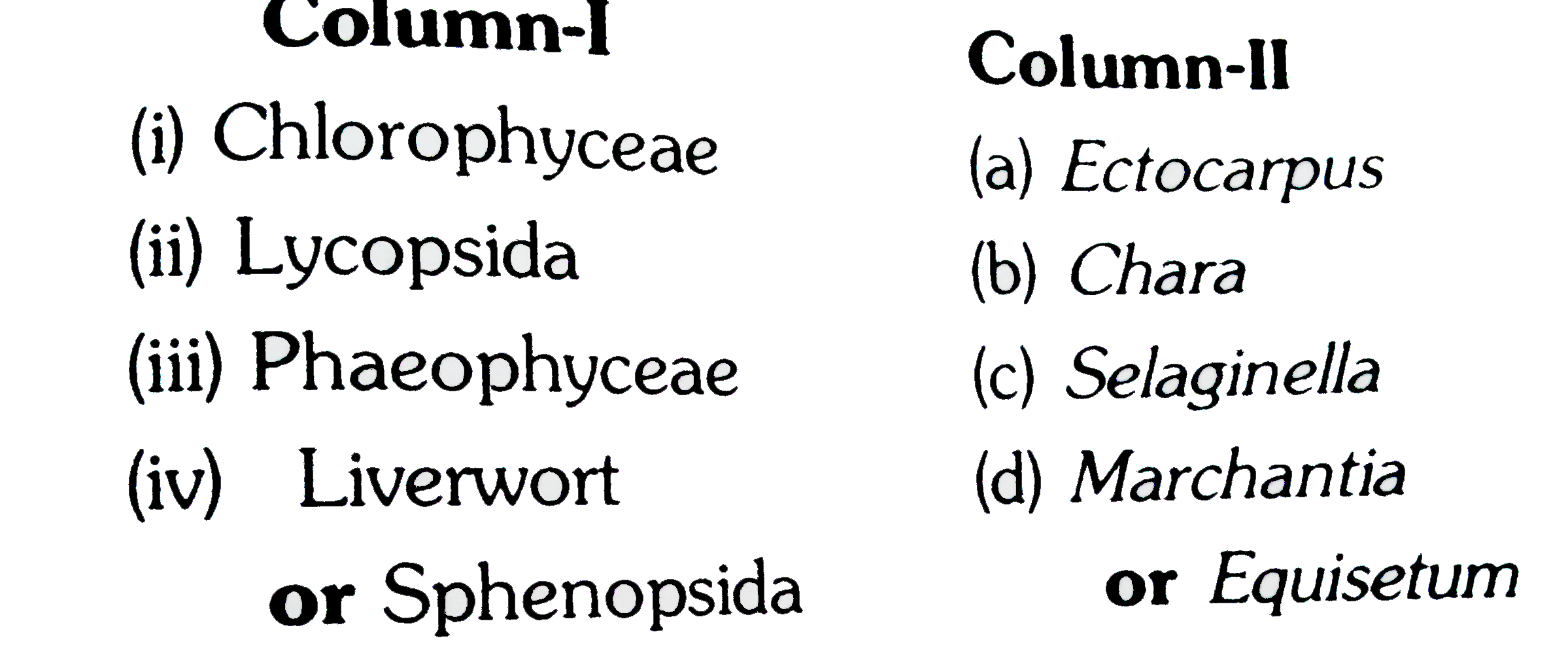Match the hydrocarbons in column I with the boiling points given in column II.
Column IColumn II(i). n-Pentane(a). 282.5 K(ii).iso-Pentane(b). 309 K(iii). neo-Pentane(c). 301 K
The correct Answer is:A.→(2)B.→(3)C.→(1)
To solve the problem of matching the hydrocarbons in Column I with their respective boiling points in Column II, we need to analyze the structure of each hydrocarbon and understand how branching affects boiling points.
1. Identify the Hydrocarbons:
- (i) n-Pentane
- (ii) iso-Pentane
- (iii) neo-Pentane
2. Understand the Structure:
- n-Pentane: This is a straight-chain hydrocarbon with the formula C5H12. It has no branches, which means it has a larger surface area.
- iso-Pentane: This is a branched-chain hydrocarbon with the formula C5H12 but has one branch. Its structure is less linear than n-pentane.
- neo-Pentane: This is a highly branched hydrocarbon with the formula C5H12 and has two branches. It has the least surface area among the three.
3. Determine the Boiling Points:
- The boiling point of hydrocarbons generally increases with increasing surface area. Thus, the order of boiling points will be influenced by the degree of branching:
- n-Pentane has the highest boiling point because it has the longest chain and the most surface area.
- iso-Pentane has a lower boiling point than n-pentane but higher than neo-pentane due to its single branch.
- neo-Pentane has the lowest boiling point because it is the most branched.
4. Match the Hydrocarbons with Boiling Points:
- n-Pentane: (b) 309 K
- iso-Pentane: (c) 301 K
- neo-Pentane: (a) 282.5 K
Final Matching:
- (i) n-Pentane → (b) 309 K
- (ii) iso-Pentane → (c) 301 K
- (iii) neo-Pentane → (a) 282.5 K
- (i) n-Pentane
- (ii) iso-Pentane
- (iii) neo-Pentane
- n-Pentane: This is a straight-chain hydrocarbon with the formula C5H12. It has no branches, which means it has a larger surface area.
- iso-Pentane: This is a branched-chain hydrocarbon with the formula C5H12 but has one branch. Its structure is less linear than n-pentane.
- neo-Pentane: This is a highly branched hydrocarbon with the formula C5H12 and has two branches. It has the least surface area among the three.
- The boiling point of hydrocarbons generally increases with increasing surface area. Thus, the order of boiling points will be influenced by the degree of branching:
- n-Pentane has the highest boiling point because it has the longest chain and the most surface area.
- iso-Pentane has a lower boiling point than n-pentane but higher than neo-pentane due to its single branch.
- neo-Pentane has the lowest boiling point because it is the most branched.
- n-Pentane: (b) 309 K
- iso-Pentane: (c) 301 K
- neo-Pentane: (a) 282.5 K
- (i) n-Pentane → (b) 309 K
- (ii) iso-Pentane → (c) 301 K
- (iii) neo-Pentane → (a) 282.5 K
Topper's Solved these Questions
- HYDROCARBONSBOOK - NCERT EXEMPLAR ENGLISHCHAPTER - HYDROCARBONSEXERCISE - Assertion and Reason
4 Videos
- HYDROCARBONSBOOK - NCERT EXEMPLAR ENGLISHCHAPTER - HYDROCARBONSEXERCISE - Long Answer Type Questions
4 Videos
- HYDROCARBONSBOOK - NCERT EXEMPLAR ENGLISHCHAPTER - HYDROCARBONSEXERCISE - Short Answer Type Questions
20 Videos
- ENVIRONMENTAL CHEMISTRYBOOK - NCERT EXEMPLAR ENGLISHCHAPTER - ENVIRONMENTAL CHEMISTRYEXERCISE - Long Answer Type
5 Videos
- HYDROGENBOOK - NCERT EXEMPLAR ENGLISHCHAPTER - HYDROGENEXERCISE - LONG ANSWER TYPE QUESTIONS
8 Videos
Similar Questions
Knowledge Check
Match the column I with column II.
 AA-q,B-r, C-s,D-pBA-p, B-q, C-r, D-sCA-r, B-q, C-p, D-sDA-r, B-p, C-q, D-s
AA-q,B-r, C-s,D-pBA-p, B-q, C-r, D-sCA-r, B-q, C-p, D-sDA-r, B-p, C-q, D-sMatch the column I with column II.
 AÂ A - q, B - r, C - s, D - pBA - p, B - q, C- r, D - sCÂ A r, B - s, C - p, D- qDA -s, B - p, C-q, D - r
AÂ A - q, B - r, C - s, D - pBA - p, B - q, C- r, D - sCÂ A r, B - s, C - p, D- qDA -s, B - p, C-q, D - rMatch the column I with column II.
 AA-p,B-q,C-r,D-sBA-q,B-r,C-s,D-pCA-s,B-r,C-q,D-pDA-s,B-p,C-q,D-r
AA-p,B-q,C-r,D-sBA-q,B-r,C-s,D-pCA-s,B-r,C-q,D-pDA-s,B-p,C-q,D-r





